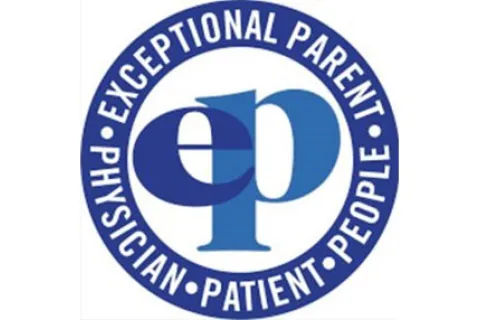Home and Community Based Services (HCBS) Waivers
An overview of the Medicaid program that provides opportunities for adults and children with autism to receive services in their own home or community
Medicaid is a joint federal-state program providing health benefits for those who meet eligibility requirements. The program provides for people with disabilities, including autism spectrum disorder and other developmental disabilities.
A Medicaid waiver is a provision which allows the federal government to waive rules that usually apply to the Medicaid program, such as income level. The intention is to allow individual states to accomplish certain goals, such as reducing costs, expanding coverage, or improving care for certain target groups. Through these waivers, states can provide services that wouldn’t usually be covered by Medicaid. For instance, in-home care for people who would otherwise have to go into long-term institutional care. States are required to cover institutional care for eligible individuals but have more flexibility about coverage for home and community-based services waivers, and in some states, there are substantial waiting lists to receive those waiver services.
Medicaid HCBS fund the majority of lifelong supports that people with autism and their families rely on throughout their life spans to live, remain safe and participate in their communities.
One note: Medicaid is not the same as Medicare. They are separate, government-run programs that typically serve different groups of people and are funded by different parts of the government.
What is a Medicaid waiver?
A Medicaid Waiver is for individuals with disabilities and chronic health conditions. Home and community-based services waivers (HCBS Waivers) allow healthcare professionals to provide care in a person’s home or community instead of a long-term care facility. They help pay for standard medical and non-medical care, including personal care services, respite care, and adult day programs.
Who administers Medicaid waivers?
Following federal guidelines, individual states develop HCBS Waivers. All states and DC offer services through them. States can operate as many HCBS Waivers as they want, but the programs must:
- Demonstrate that the waiver service does not cost more than the same service in a healthcare facility
- Ensure a person’s health and welfare
- Provide reasonable and adequate standards to meet a person’s needs
- Follow an individualized plan of care centered on the person
Check out Medicaid’s list of waivers; you can search by state and type.
States can waive some Medicaid requirements to meet the needs of individuals. For example, a waiver may help a person with an increased likelihood of requiring long-term care, such as those with behavioral issues or technologically dependent children.
It’s important to note that because waivers are handled at the state level, eligibility and funding for services does not transfer between states. This means that moving to a new state means starting over with the evaluation process.
Are there autism-specific HCBS waivers?
It is important to check with your state. You can start with Medicaid’s list of waivers. Some states have waivers specifically for autistic adults. Others have waivers for adults with developmental disabilities that may or may not include criteria related to IQ. Some states group children and adults together, while others have targeted waivers for certain age groups and may not cover adults. Even in states that do not provide autism- or developmental-disability-specific waivers, some autistic adults may be eligible for waivers designed for physical or medical disabilities.
Who can receive a waiver?
Each state determines who can receive a waiver and each is able to tailor services to meet the needs of specific groups. States also choose the maximum number of people that will be served under the HCBS Waiver program. It is important to note that the HCBS waiver program is deemed a privilege rather than a right. As such, there are a limited number of spots available, and people can spend several years on a waiting list before they receive care.
Eligible individuals must demonstrate the need for care that meets the state’s eligibility requirements for services in an institutional setting. Waiver programs are generally designed for those who would benefit from round-the-clock access to medical services, plus personal care services like help with dressing, bathing, and going to the bathroom. This is usually based on a diagnosis from the individual's doctor as well as assessments that look at the person’s ability to complete activities of daily living, including skills related to self-care, understanding and use of language, learning, mobility, self-direction, and ability to live independently.
Financial need may also factor into Waiver eligibility. While states don’t have to require the individual to be in regular receipt of Medicaid, many of them do. And in those states that don’t, there are still caps on how much someone can be earning and have in savings/financial assets to qualify for an HCBS program. Some states make certain exceptions for individuals with disabilities. For example, those who work and earn too much income to qualify under the standard financial limits may still be eligible.
What kind of services do waivers provide?
Waivers are designed to provide medical and non-medical services individuals need to live in the community. This may include case management, transportation, home care or direct support, respite, adult day services, employment supports, assistive technology, respite, and therapies (speech, occupational, physical).
Some states include certain services related to housing, like home modifications or assistance with finding housing when someone is transitioning out of an institution. However, it is important to know that because waivers are designed to support independent community living, they do not cover rent or room and board for residential programs.
What is involved in the application process?
The process of being evaluated for a waiver varies from state to state, starting with when and to whom you reach out about your interest in an assessment. In some states, waivers are age-specific, and you may have to wait until you are age-eligible for the program just to get on the waitlist for an assessment. Other states allow you to join the waitlist in advance. It’s important to check the rules in your state so that you can be prepared.
The process typically requires a signed form from a qualified medical professional as proof that an individual has a qualifying diagnosis. The professional will also be asked for their opinion as to whether the individual meets the level-of-care criteria to receive a waiver. The state will most likely perform its own assessments in which the individual and/or a caregiver are asked questions about the individual’s daily living skills such as self-care, understanding and use of language, learning, mobility, self-direction, and ability to live independently.
Some steps in the assessment process itself can involve waitlists, but even without any formal additional wait time, it can take several months or more to get through the process.
What if the evaluation results in a denial?
Sometimes, a person is not eligible for waiver services based on their assessment. This could be due to something that came up on the evaluation, such as the individual having a level of support needs that either cannot be adequately met with waiver services or can be met through a less intensive support option. If you disagree with the state’s decision, you can appeal it. There are lawyers who specialize in helping people with disabilities navigate the appeals process.
It is also possible that the denial is due to something more straightforward, like an error in documentation of finances or missing medical records, so it is important to find out what is behind the denial. If you receive a denial, it should include information about how to start the appeals process.
How long does it take to receive services once a waiver is granted?
Since Medicaid waiver programs are not considered an entitlement, it can take months or years before a person who is deemed eligible can start receiving services. Wait times vary widely from state to state and even between different waivers in the same state. As part of the assessment process, states may ask about a person’s current unmet needs and existing support options to assign a priority level to people on the waitlist.
What other supports might be available while on a waitlist?
While on a Waiver waitlist, families can explore other programs to help fill the gaps, including federal programs, like the following:
Financial Supports
- Supplemental Security Income (SSI): Provides monthly payments to adults and children with disabilities who have income and resources below specific financial limits.
- Supplemental Nutrition Assistance Program (SNAP): Provides monthly benefits for food to low income households
- Low-Income Home Energy Assistance Program (LIHEAP): Helps low-income homeowners and renters pay energy bills.
Transportation
- Paratransit services: Provides door-to-door transportation for eligible people with disabilities. Eligibility and availability vary by state and local area.
Employment Supports
- Vocational Rehabilitation: Provides individualized services for individuals with disabilities to find and keep competitive employment. View a list of VR agencies by state.
- Job Accommodation Network: Provides free, expert, and confidential guidance on workplace accommodations and disability employment issues
Therapies
- Speech, occupational, physical, mental health and/or behavioral therapies can be covered by your health insurance provider if they are deemed medically necessary by a doctor. This may require prior authorization or appeals.
Other Sources of Community Supports
- Some states have funding available through the county or other local sources in addition to state waivers
- Grants from nonprofit organizations
- Support groups and leisure/social groups for caregivers and adults with disabilities
Advocacy Networks and Organizations
- Centers for Independent Living: Consumer-controlled, community-based, private nonprofit agencies that provide independent living services for people with disabilities, including information and referral, skills training, peer counseling, advocacy, and post-institutional transition services. View a list of CILs by state.
- Assistive Technology Act Programs: State-run programs that provide services including demonstration, device loan, and financing that make assistive technology more accessible to people with disabilities. View a list of AT Act Programs by state.
- University Centers for Excellence in Developmental Disabilities Education, Research, and Service (UCEDDs): A network of university-based programs that are provided with grants to fund research, public education, and community services for people with disabilities. Find a UCEDD in your area.
Who directs the services?
All waiver programs are designed to be person-centered, which means that they should empower the individual to find their own voice, have agency in their own life and reach their own goals.
In some cases, Medicaid waiver services can also be self-directed. This means that instead of receiving services from an agency, the individual decides when, how, and from whom their services are delivered. With a budget set by the state, they interview and hire their own providers and set their own schedule. Self-directed services are often part of waivers designed for primary physical or medical disabilities. Those designed for intellectual or developmental disabilities may instead have a family-directed option.
In other cases, waivers are still person-centered, but services are overseen by a service coordinator. This role can go by different names in different programs, but their job is to help the waiver recipient determine how the budget will be allocated based on what types and how many hours of services are needed. The service coordinator then connects the recipient with agencies that provide each of those services. The agencies themselves work with the person and/or family to coordinate staffing and scheduling.
Some waivers allow the waiver recipient to choose between the two options.
What if I’m unhappy with my services?
If you or a family member are a waiver recipient and you are unhappy with your services, you have the right to request changes to your service plan. Part of person-centered planning means that you should have freedom of choice of your providers. This means that you can request a change if your service coordinator or the agency providing your services isn’t working for you. If you have a specific concern, you can also file a complaint at the state level, though this process varies by state.
Advocacy
One of Autism Speaks Advocacy focus areas for our state government affairs work is improving access to and quality of HCBS system. We are continuing to push for further changes and monitor the implementation of policies to ensure improved access to and quality of supports. To join us or follow our efforts, please sign up for our Policy Pulse newsletter.









